
Growing a leucothoe in a pot
ON THE TERRACE OR BALCONY
Contents
The Leucothoe are still rare shrubs in gardens, yet they are very interesting due to their lovely decorative leaves that change throughout the seasons. Red or copper in spring, then deep green or golden in summer, and finally orange or purple in winter, they are sure to impress! Easy to grow, this beautiful shrub also thrives well in pots. Discover our tips for successfully growing Leucothoe in pots to enhance a terrace or balcony.
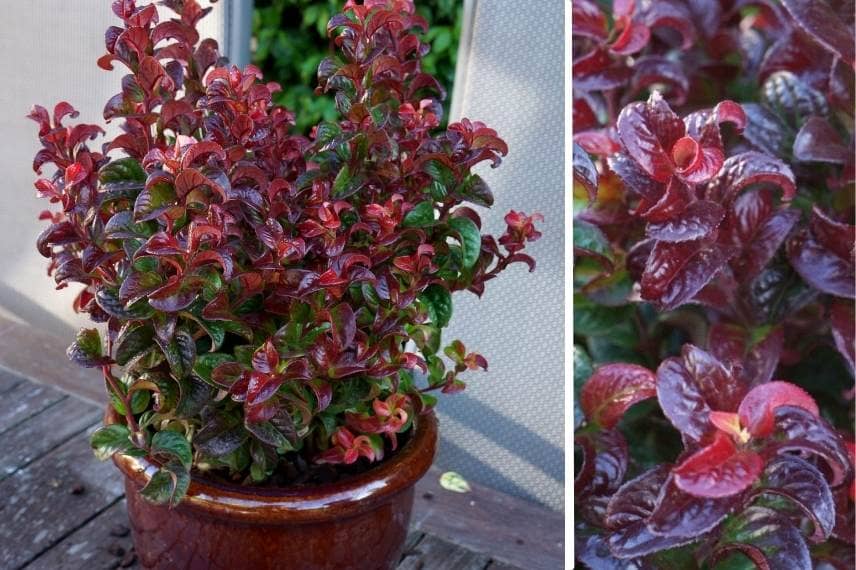
The Leucothoe axillaris ‘Twisting Red’ beautifully decorates a terrace with its small, elegantly twisted and curled leaves.
Which variety to choose?
All varieties of Leucothoe can be grown in pots, leaving you with plenty of choices. However, low-growing cultivars, not exceeding 1 m in spread at ripeness, will thrive much better in these conditions. So, which do you prefer? Twisted leaves? Or conversely, long and narrow leaves? In shades of green and purple, golden or variegated? Here’s a selection of our favourite varieties to help you make your choice:
- The Leucothoe axillaris ‘Curly Red’ is a semi-evergreen variety that stands out with its stunning twisted leaves! They are a beautiful purple at the bud burst period, then turn dark green at ripeness.
- The Leucothoe axillaris ‘Curly Gold’ also features twisted and semi-evergreen foliage, but it stands out with its orange-red hues in spring, evolving to gold, and finally green apple.
- The semi-evergreen leaves of the Leucothoe axillaris ‘Twisting Red’ are also twisted and curled. A beautiful purple-red at the bud burst period, they become green and glossy in summer. Then, they redden as autumn’s chill sets in the garden.
- The Leucothoe fontanesiana ‘Little Flames’ has long, slender evergreen leaves that are copper-red when young, turning green at ripeness, then becoming purple in winter.
- The Leucothoe keiskei ‘Burning Love’ is perfect for decorating a terrace, thanks to its dense and spreading habit. Its long evergreen leaves change colour throughout the seasons, ranging from purple-orange to green, with bronze in between.
- The Leucothoe fontanesiana‘Whitewater’ features young purple foliage, evolving to dark green variegated with cream white. This sublime evergreen foliage turns purple in winter.
- The Leucothoe fontanesiana ‘Rainbow’ is distinguished by its unique foliage. Its young leaves are orange-red at the bud burst period, then turn dark green, marbled with white and pink during summer. The evergreen foliage then becomes dark red under the winter chill.
- The Leucothoe fontanesiana ‘Makijaz’ loves to attract attention with its young pink leaves at the bud burst period, evolving to green speckled with white over time. In summer, they turn pink, then redden with the arrival of autumn’s chill.
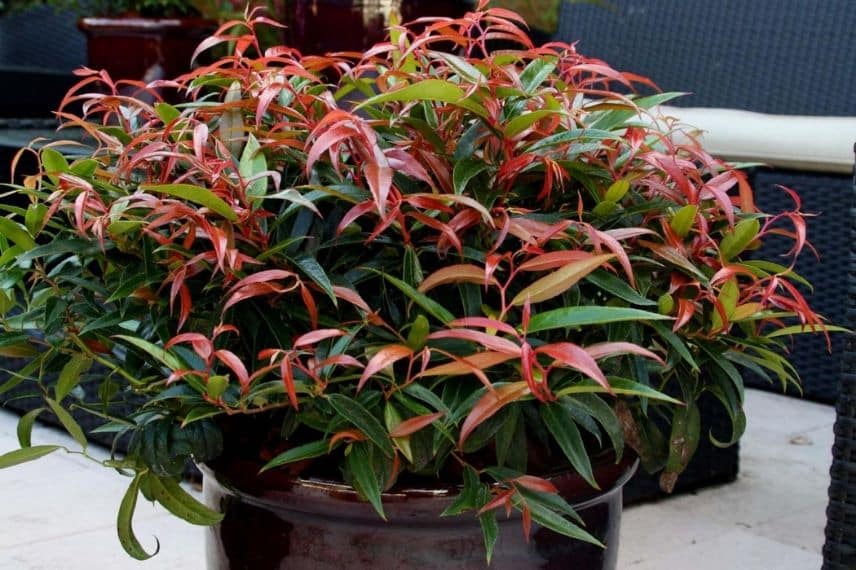
With its lovely changing foliage, the Leucothoe keiskei ‘Burning Love’ is stunning in a pot on the terrace
Which pot to choose for a leucothoe?
For a Leucothoe to thrive in its roots, choose a pot with a diameter of at least 40 cm, or even 50 cm. You can repot it into a larger container as it grows. In terms of material, a terracotta pot allows for better root respiration, while a resin pot will be lighter and easier to move if needed. Your container should have drainage holes at the bottom to facilitate water evacuation. This will help prevent moisture stagnation at the root level and the development of mould. Also, place a suitable saucer under the pot.

Although they are heavy, terracotta pots have charm and advantages
Discover other Leucothoe
View all →Available in 2 sizes
Available in 2 sizes
Available in 1 sizes
Available in 1 sizes
Available in 1 sizes
Available in 1 sizes
Available in 1 sizes
Available in 1 sizes
Available in 1 sizes
Available in 1 sizes
What type of substrate to use?
Leucothoe is easy to grow if you provide it with an acid substrate that remains slightly moist and well-drained, but not waterlogged. To facilitate water drainage and excess watering, place a layer of clay pebbles at the bottom of your pot.
Then mix:
- 1/4 of heather soil
- 1/4 of ordinary potting soil
- 1/4 of leaf mould. If you don’t have this type of compost available, replace it with horticultural compost, rich in nutrients.
- 1/4 of perlite, vermiculite, small gravel, river sand, or pumice to improve drainage.
- Add a handful of ground horn, an organic slow-release fertiliser, to nourish your bush.
→ Check out our tutorial: How to make good leaf mould?
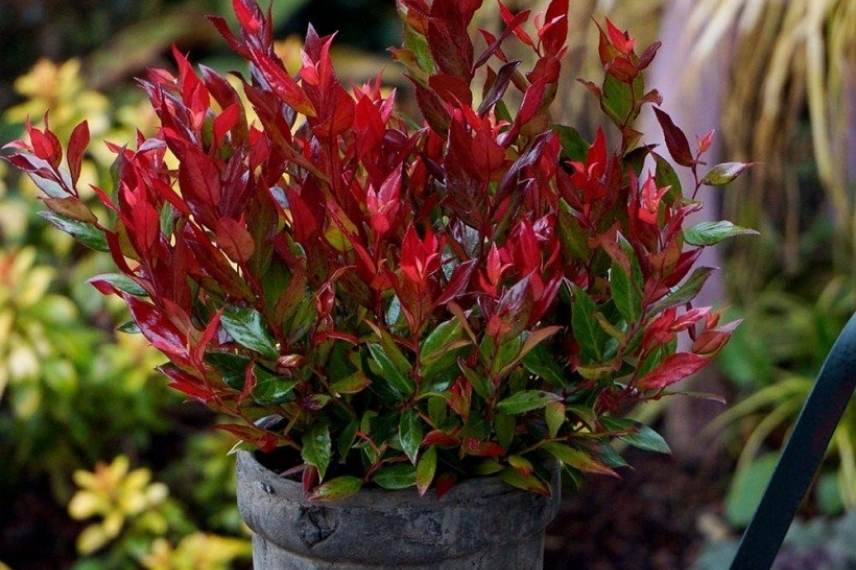
The Leucothoe fontanesiana ‘Little Flames’ looks stunning in a pot on the terrace
When and how to plant a Leucothoe in a pot?
When should I plant my Leucothoe in a pot?
Spring is the best season to plant your Leucothoe in a pot. Indeed, between March and April, your bush will have time to acclimatise gently. However, shrubs can be planted all year round, except during periods of intense summer heat or winter frosts.
How to plant a Leucothoe in a pot?
- Place a layer of clay balls, 5 cm thick, at the bottom of your pot.
- Pour your potting mix until it reaches halfway up the pot.
- Remove the young plant from its pot and place it in the centre of the pot. The top of the root ball should be level with 2 or 3 cm below the rim of the pot.
- Fill around the root ball with your potting mix, ensuring you always leave 2 cm below the rim of the pot.
- Gently firm the potting mix with your hands.
- Water generously.
- Cover the potting mix with mulch to retain moisture and prevent the substrate from drying out too quickly. Note that pine bark makes an excellent mulch and will help maintain the acidity of the potting mix.
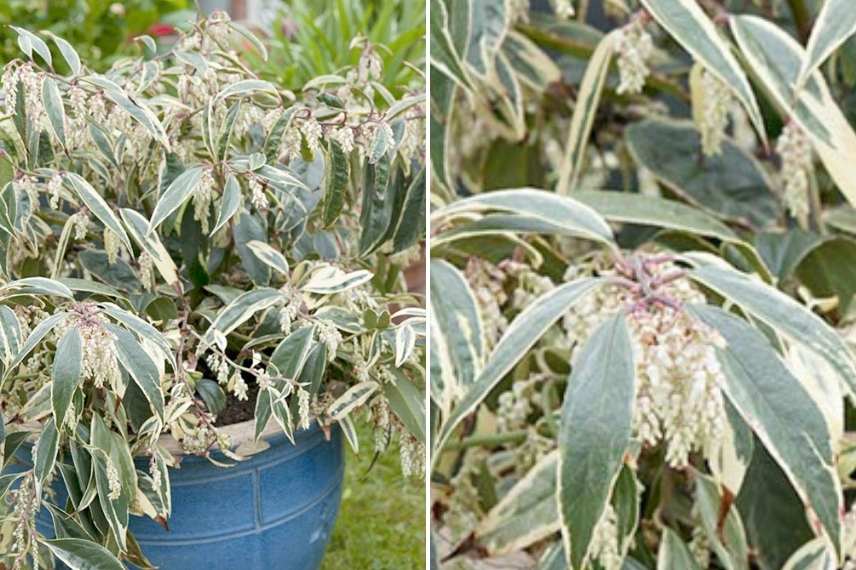
The Leucothoe fontanesiana ‘Whitewater’ has beautiful variegated foliage.
How to care for a Leucothoe in a pot?
Exposure
Place your pot with your Leucothoe in light partial shade or in the shade, and also protect it from strong winds.
Watering and Fertilising
Potted Leucothoe cannot tolerate drought, even temporarily. Therefore, ensure it is watered very regularly. Only use rainwater, which is free of lime, unlike tap water. Watering in spring and autumn should be done about 1 to 2 times a week.
In case of a heatwave, increase watering to every 2-3 days, or even daily if necessary, preferably in the evening. The potting mix should always be slightly moist, but never waterlogged. Excess water can lead to mould formation and suffocate the roots.
In winter, reduce watering to once or twice a month if necessary, especially if there is no rain for an extended period.
To know when to water, insert your finger into the substrate. If it comes out dry: water. If it comes out damp: do not water.
Once a year, at the end of winter, apply a fertiliser for acidophilous plants. Also, add a layer of heather soil at the base of the bush.
Wintering the Leucothoe
Very hardy, Leucothoes can withstand temperatures down to -20 °C. Except in montane climates at high altitudes (hardiness zones 5 and 6), these shrubs can spend the winter outdoors without being brought inside. Note that a potted shrub is always more sensitive to cold than one planted in the ground. Simply place your pot in a sheltered spot from icy winds, against a wall, for example.
In very cold regions (hardiness zones 5 and 6), you should winter your pot in a greenhouse or in a bright, unheated room in your home.
Repotting the Leucothoe
To renew the substrate and provide nutrients, you will need to repot your bush every 3-4 years. Take this opportunity to give it a larger container according to its growth.
Maintenance and Pruning of the Leucothoe
Leucothoes do not require pruning. However, you can remove unsightly or dead branches between February and April, before new growth begins. A rejuvenation pruning is also possible every 4 or 5 years: at the end of winter, in March, severely cut back 1/3 of the stems. This pruning will encourage your Leucothoe to produce new shoots and become denser.
For further reading
- Discover all our varieties of Leucothoe
- To learn everything, browse our sheet on Leucothoe: planting, cultivation and maintenance
- Don’t miss their planting! Follow Michaël’s tips to succeed in growing heather soil bushes
- Subscribe!
- Contents
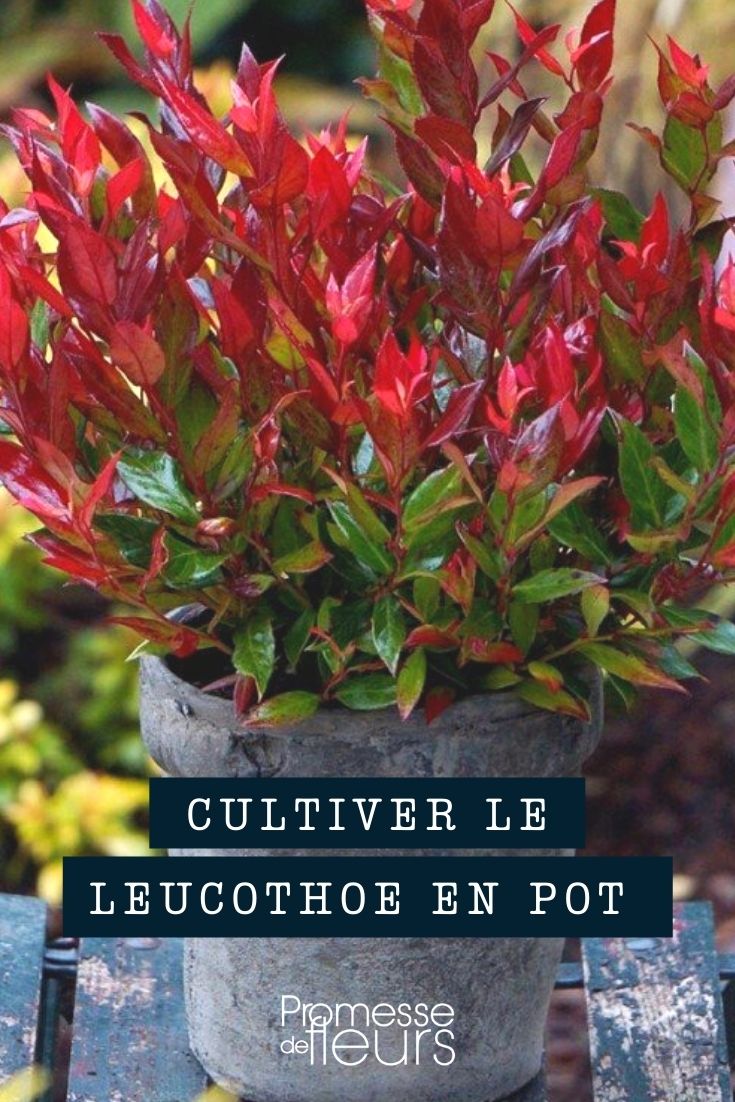


































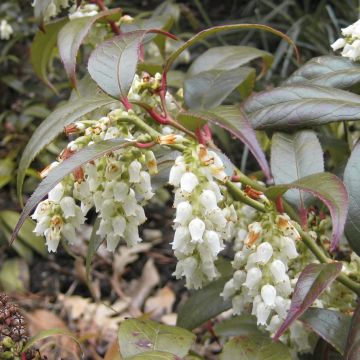
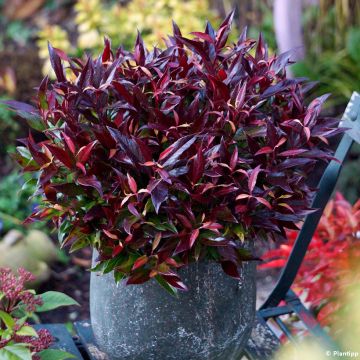



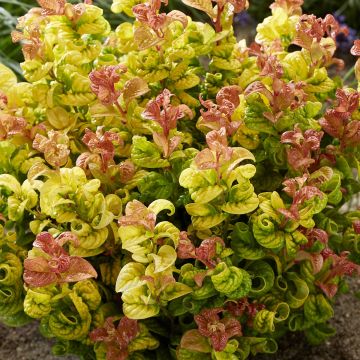
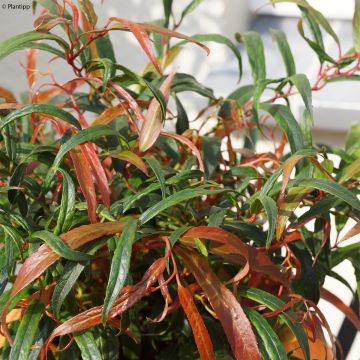
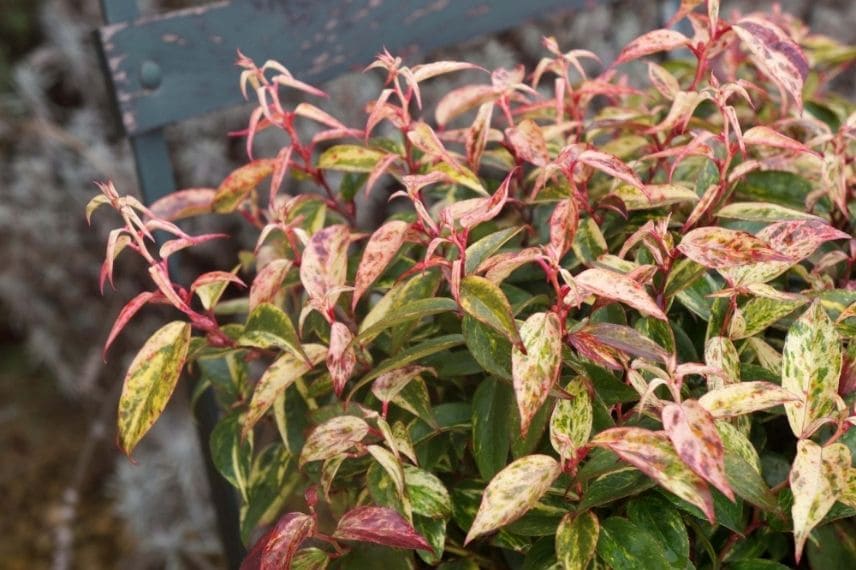
Comments